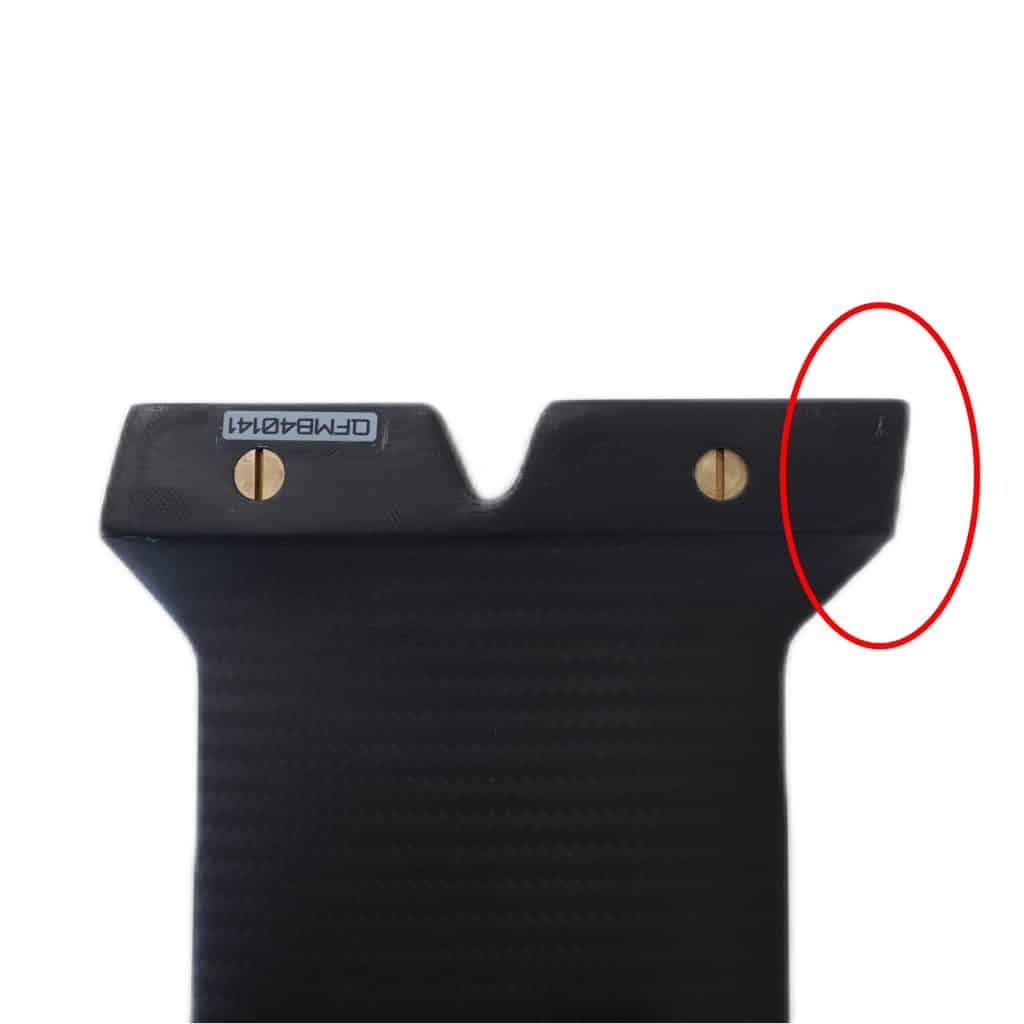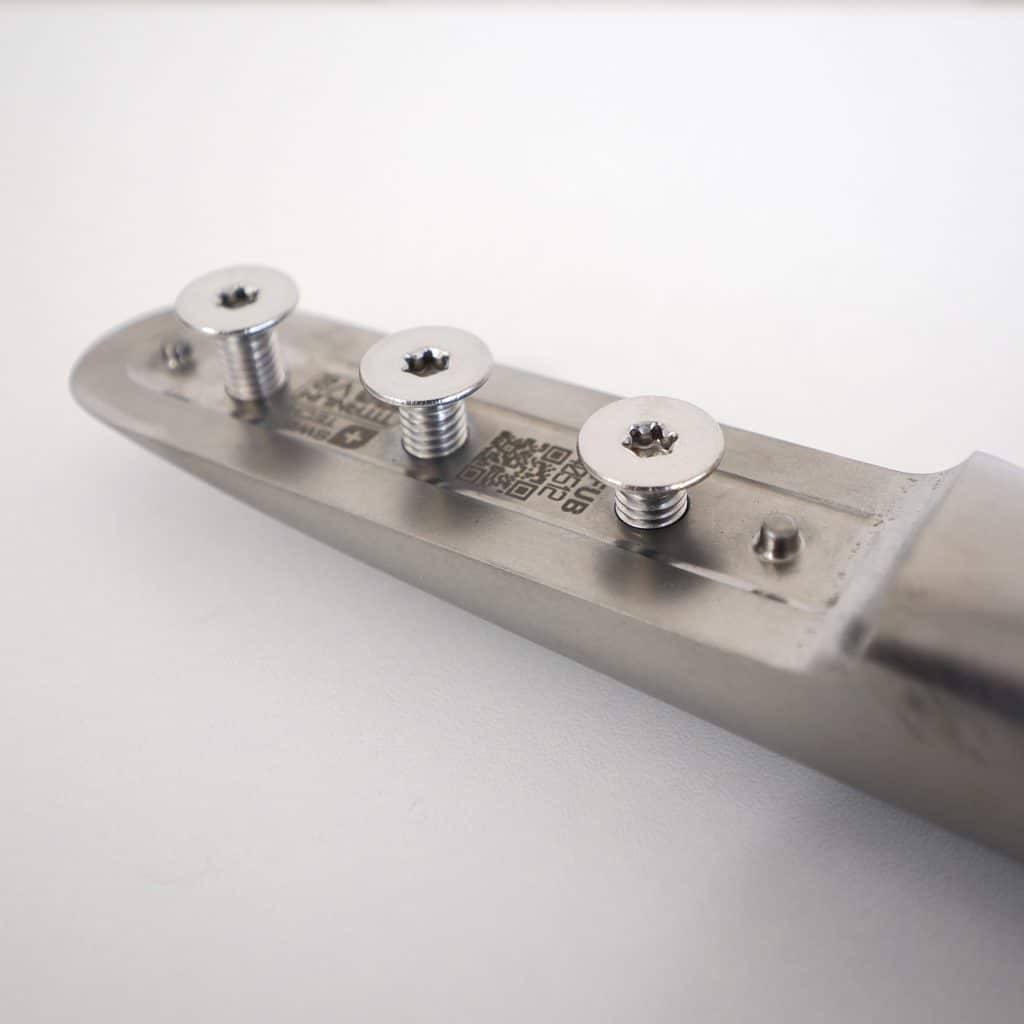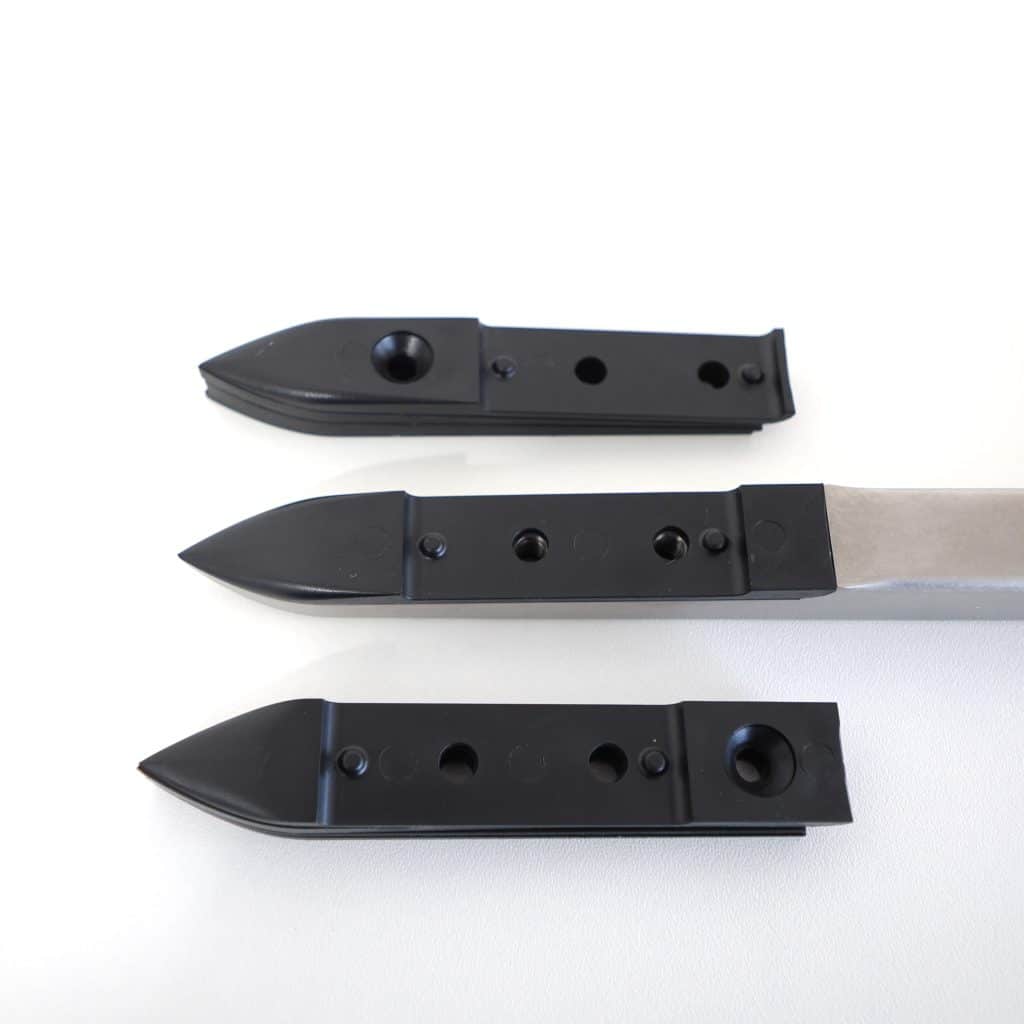Perhaps this year’s surprise. Out of (almost) nowhere, there 1 at once is the Patrik AEON slalom racing foil. Looking at the PWA it seems that this is the must have foil to really stay in the top. This high end windfoil has already proven itself. But how does this AEON foil? And what makes this foil so different? Time to test out the Patrik AEON foil in a slalom set.
Set up for the test 95 cm M mast + V2 100 cm Titanium and Aluminum fuselage + 400 X, 450 H, 550 H front wing with 160 back wing.
High-end quality and finish
If you buy a Patrik AEON PWA slalom windfoil set , you will soon spend at least € 3,000. Then you also expect excellent workmanship, right? All parts have a sticker that reads “Swiss Tech,” and indeed, the finish and fit of the parts are above average. The wings fit perfectly and the holes are neatly drilled so that the bolts do not protrude. With other high-end brands, we have seen this differently.
The front wing is attached with three M8 torx bolts for maximum strength. There are positioning points in the fuselage where the front wing fits exactly, so it is always in the right place. The connection between mast and fuselage is trapezoidal at the rear. This causes the trapezoidal tip to hook into the fuselage, so the back of the fuselage is never the first to detach from the mast. A simple but very effective solution. In the IQfoil class, it is common for the rear bolts of the fuselage to be pulled out of the mast by the enormous forces, increasing the risk of losing the wingset.
Another clever innovation is that the back wing can be moved forward or backward with three spacers in two different places (in 1 cm increments). In addition, the angle of the back wing is also adjustable with a set of 12 spacers, allowing you to trim in 0.25-degree increments.



The must have mast is the 95 cm mast, available in two qualities. The S-mast is made of more expensive carbon and is extremely stiff. The M-mast is almost as stiff, but is about 0.8 mm thicker at the bottom of the mast, and the chord length is 10 mm longer. A different quality of carbon is used for the M-mast, so the mast must be slightly thicker to maintain the same stiffness.
To put stiffness in perspective, the Starboard C600 mast and the F4 Foils 101 cm (GP) R-masts are significantly less stiff. In particular, torsional stiffness, which is perhaps more important than lateral stiffness, is unprecedented with the Patrik AEON mast.
What we regret is that the mast’s deep tuttle base, like some other high-end brands, is just a little too thin to fit perfectly in the foil box. With a thin piece of plastic, you can pad the deep tuttle base so that it still fits tightly in the box. Or you apply a thin layer of epoxy, which also makes the mast fit tightly in the box. We don’t really see the point of a slightly too thin deep tuttle base.
Very neat covers are included for both the mast and wings.
Next level control and stability*
In recent years we have mainly sailed the F4 Foils slalom racing foil, a relatively easy, fast and stable foil. We are now testing the Patrik AEON on the Future Fly Flying Camel 160 and heading out on the water at about 12 knots, with the Hyper 7 8.0 m2. We choose the 550 front wing, placing the back wing all the way back with a shim of 0.75.
The first thing you notice is how different the Patrik AEON feels. Even though the front wing of the AEON with the V2 fuselage is about 3 cm further back compared to the F4 Foils slalom with the 100+3 fuselage, it actually feels like the front wing is further forward. It gives the feel of a racing foil with a long fuselage, which offers great stability and confidence without too much elevator.
With the 0.75 shim, we experienced a little too little elevator at higher speeds. After we replaced the 0.75 shim with the 1.0, the foil feels more stable, even in wind gusts the foil remains exceptionally stable (we weigh about 82 kg). With the F4 Foils, the board tended to dive in gusty winds, which made pushing more difficult. That is noticeably less now.
After half an hour we already notice that we have a lot of control and confidence, which makes it easier and more relaxed to push. In fact, the harder the foil goes, the more stable it feels. Above 45 km/h the foil feels extremely stable and you can really “lock” the set to go even faster. The straight-line stability is also striking; in constant wind, it feels like riding on rails, that’s how stable the foil is. This is probably due to the highly curved tips of the back wing, which contribute to straight-line stability. Jibbing does take some getting used to; the Patrik AEON foil seems a little less easy or short to jibe. After an hour of foiling, we got used to it, but at first this was noticeable.
In wind gusts, the foil responds with a kind of “delay,” which makes it much easier to anticipate gusts. Especially when foiling downwind, the stability is great. Again, it feels like we have a longer fuselage than we actually do, so much control and stability we have. This, without better technique, will make you go harder! An experience we haven’t had before with slalom foils.
The resistance with which the foil glides through the water is noticeably lower than with F4 Foils. All the while we are now using the M-mast with the aluminum fuselage!
Other trim with more power
After we’ve done several sessions with more wind, smaller wings and smaller sails, we notice that our trim of the set changes. We can maintain control much longer with more power in the set up. We foil on average with more power in the sail, can stay in the rear footstrap in a controlled manner longer, and down wind has never been easier.
The ultimate question is whether we are going faster now. Yes! No doubt with the Patrik AEON M mast and aluminum fuselage we easily go quite a few knots faster, not only the top speed, but especially the average speed on runs of 10 sec and 250 meters are significantly higher!
Titanium vs Aluminum fuselage
The aluminum fuselage costs a very reasonable € 319, while the titanium variant costs € 899, almost three times as much. The titanium fuselage is about 1 mm narrower at its widest point and 5.6 mm thinner, representing a 17% difference in thickness, quite a lot. In addition, titanium is stiffer than aluminum. Of course, we are curious to see if we (with our relatively low weight) notice that extra stiffness and the thinner profile of the titanium fuselage.
Sometimes differences are most noticeable when you “take a step back. We test both fuselages with the same set-up. After about half an hour of sailing with the titanium fuselage, we switch to the aluminum fuselage. The first thing you immediately notice is that the foil feels less stable. We clearly experience more twist in the foil, especially with larger front wings. With the titanium fuselage, that twist is significantly less.
We also notice more resistance at the aluminum fuselage. It feels like we have to push the foil through the water more compared to the titanium version. It seems like we’re hitting the limit faster and going faster less easily. To put it in the proper perfective, even with the aluminum fuselages we achieve speeds that go toward 60 km/h. But with the titanium fuselage, it’s easier to go harder.
Frankly, we did not expect these big differences, especially as non-PROs weighing only 82 kg. The titanium fuselage is nearly € 600 more expensive than the aluminum variant, but it does offer a significant upgrade. In fact, we think an upgrade to the titanium fuselage adds more than an upgrade to the S-mast.
Efficient design wings
In several reviews this year, we have already written that the new generation of wings has become much more efficient. This also applies to the Patrik AEON wings compared to the F4 Foils we used until recently. With the Patrik AEON foil, we can effectively foil effortlessly from about 11 knots with the 550 cm2 front wing combined with the Hyper 7.8.0 m2. The 450 cm2 front wing performs well from 14 to 15 knots. Even in wind dips and during jibe exits, the front wings continue to provide enough elevator to stay in the air and accelerate quickly again.
Our advice is to definitely consider this if you are planning to purchase a Patrik AEON foil.
*Disclaimer, stability in perspective
We are excited about the impressive stability of the Patrik AEON foil, but want to make it clear with this disclaimer that we are comparing this foil to other high-end slalom foils at speeds above 45 km/h. It is important to emphasize that an average freeride foil, such as the Starboard Freeride, Superflyer or IQfoil, is generally more stable, easier and forgiving to foil with.
In the review, we mention that the Patrik AEON foil feels very stable, especially above 40 km/h. By this we mean average speed, not top speed. Below 40 km/h we find the Patrik AEON less stable, and in that speed range there are other foils that perform better. For example, consider an average coarse racing foil with a long fuselage and large front and back wings.
If you don’t reach the average speed of 45 km/h, a “sporty” freeride or freerace foil is often a more stable and better choice. With this, you will have more fun and make more flying hours.
We often see windfoilers tempted by the potential top speed, when in reality they are more often floating than actually flying.


